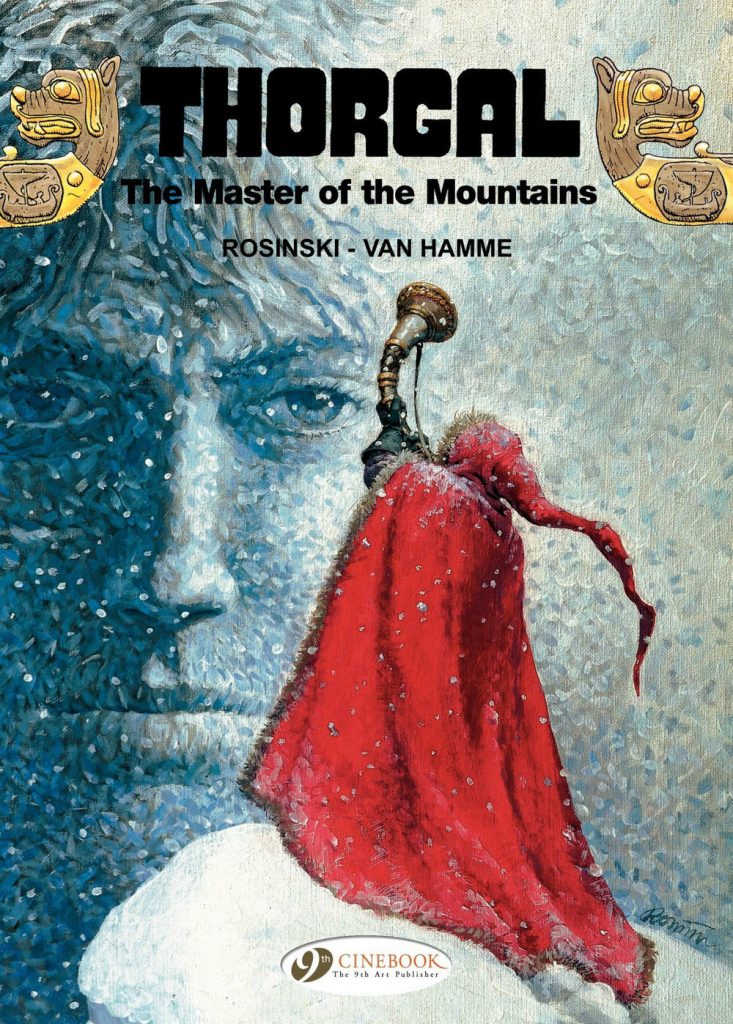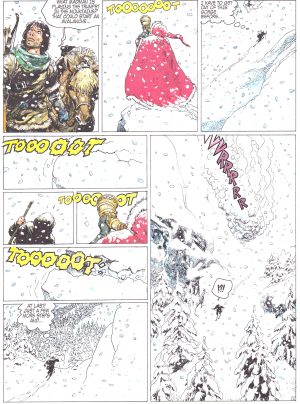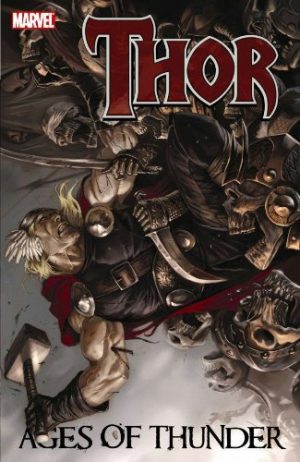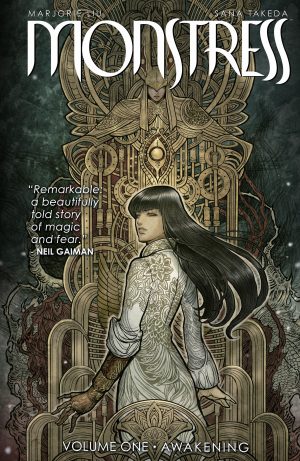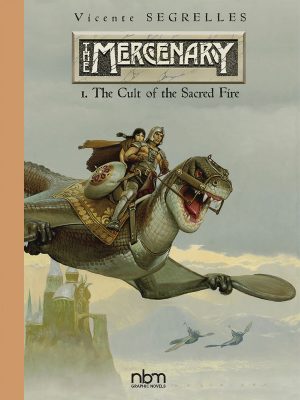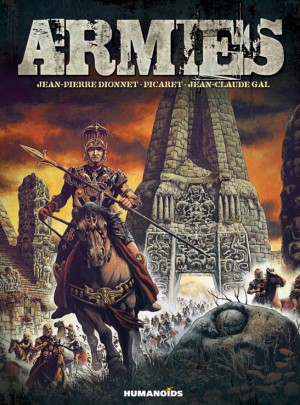Review by Jamie McNeil
Thorgal is difficult to place in a specific genre box, writer Jean Van Hamme taking inspiration from science fiction and Viking sagas. Even artist Grzegorz Rosiński’s art on the earlier Child of the Stars pays homage to Jean-Claude Mézières’ Valerian work. The Land of Qa and City of the Lost God had obvious sci-fi elements and what’s more, Thorgal is the better for it. And once again this is also true of The Master of the Mountains (Le Maítre des montagnes) and its time travel plot.
Thorgal and his family have returned to the Viking lands. Having been away from her homeland so long, a pregnant Aaricia wants to go home, so despite the winter snow Thorgal heads north on his own, planning to return by boat for his family. A mysterious scarlet clad figure atop a mountain blows a horn causing an avalanche. Blocking the mountain pass forces Thorgal to take shelter in an abandoned dwelling. Here he meets the wounded Torric, a slave fleeing the tyrannical Master of the Mountains. Even as they rest, all is not as it seems, time ebbing and flowing endlessly. Drifting in out of a thirty year timeline, every decision and action changes it. Will Thorgal be able to return to his own time and return home? And what connection does the Master of Mountains have with this old cottage?
After collecting two volumes into one for the first seven British albums, from this translation Cinebook only present a single story per book. Apart from Child of the Stars (volume 1), this is the one Thorgal album that doesn’t need knowledge of previous events. Despite the now tired theme of a woman infatuated with Thorgal, Van Hamme’s plot is well paced and presented. Time travel plots are tricky at the best of times, but Van Hamme doesn’t miss a trick. The tension is well balanced, the reveals perfectly timed yet retaining an air of mystery. Up until this point Rosiński has been the stronger of the pairing, but this has changed. They are completely synchronised as the finale plays out, both clever and satisfying. After all the jungles and deserts of the Qa arc, Rosiński returns to winter landscapes, with the challenge to make the threat of both the elements and the Master convincing. Rosinski crafts moody atmospheres, both inside and out, the final pages spectacular. He excels at the realism of people huddled around the fire or braving dangerous conditions. Employing looser lines when needed amplifies this, bright colours highlighting characters at the right time to fabulous effect.
The Master of the Mountains is the apex of Rosinski and Van Hamme’s years together. It’s a finely tuned blend of fantasy folklore and science fiction that is beautiful, captivating and flows almost seamlessly from start to finish. The journey back to the Viking homelands continues in Wolf Cub.
